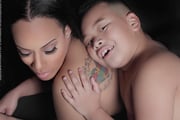ABOUT AUTISM
Autism is a complex developmental disability that typically appears during the first three years of life and is the result of a neurological disorder that affects the functioning of the brain, impacting development in the areas of social interaction and communication skills. Both children and adults with autism typically show difficulties in verbal and non-verbal communications, social interactions, and leisure or play activities.
According to a report from the Center for Disease Control in March of 2012, the prevalence of autism has risen to 1 in 88 births in the United States. It affects 1 in 54 boys - five times more often than it affects girls. In the United States, more than 1,500,000 individuals live with autism.
Autism is considered a spectrum disorder because the number and intensity of the symptoms may vary widely. Those severely affected are often withdrawn, dependent on others, and suffer from cognitive impairments. Those with less severe cases are often of above-average intelligence and independent, yet lack in social-communication skills. Autism falls under the umbrella of Pervasive Developmental Disorders (PDD). The five disorders under PDD are: Classic Autism, Asperger Syndrome, Pervasive Developmental Disorder-Not Otherwise Specified (PDD-NOS), Childhood Disintegrative Disorder (CDD), and Rett Syndrome.
TYPES OF AUTISM
|
|
|
|
|
|
|
|
|
CHARACTERISTICS OF AUTISM
Some common characteristics include:
· Lack of interest in peer relationships
· Little or no eye contact
· Lack of spontaneous or make-believe play
· Persistent fixation on parts of objects
· Difficulty in using and understanding language
· Poorly-developed social skills
· Over- or under-sensitivity to sound, sight, taste, touch or smell
· Repetitive behaviors such as rocking or spinning objects
· Difficulty with changes to routine or surroundings
· Hyperactivity
· Aggression, self-injury, or severe withdrawal
